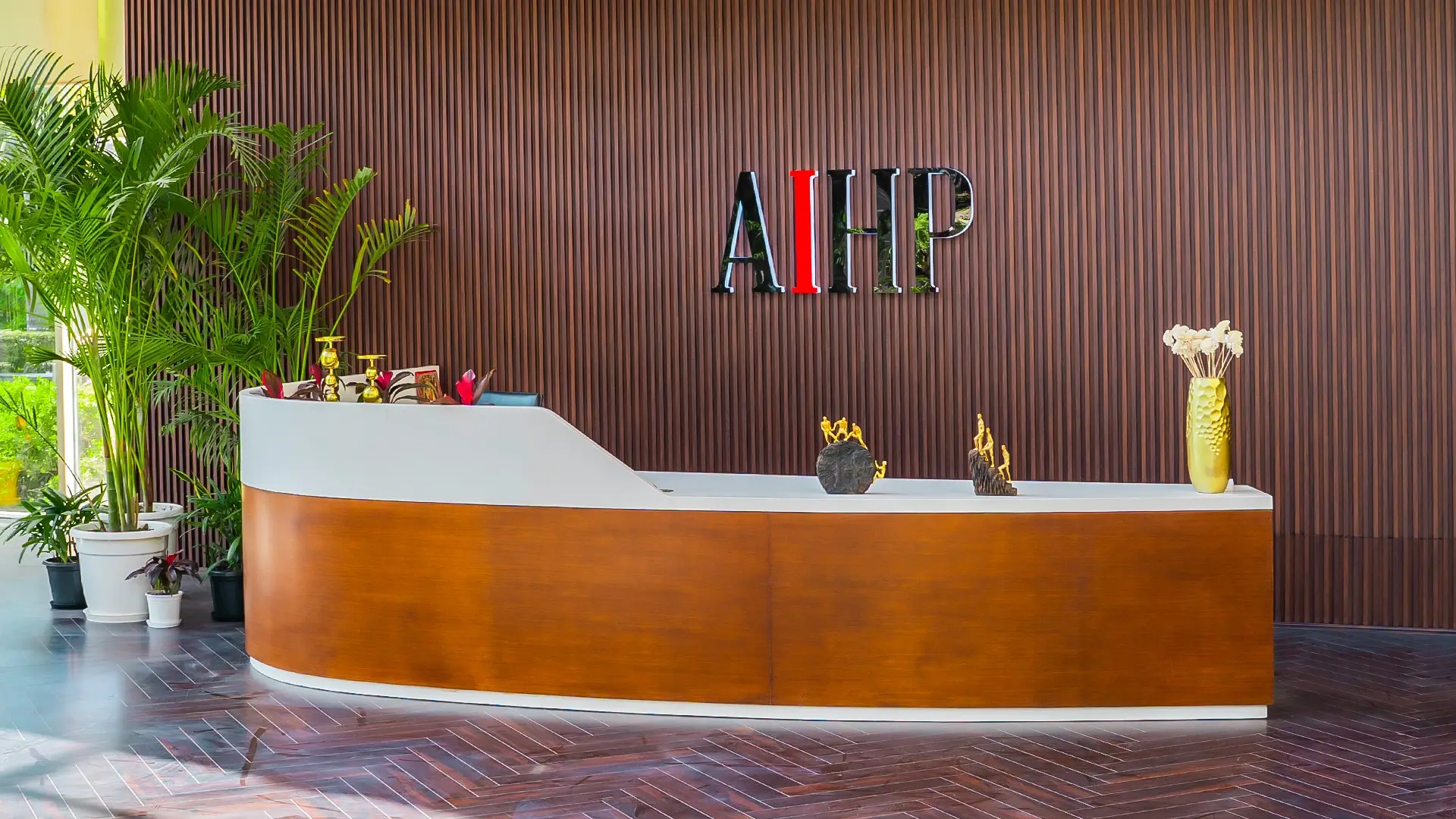Introduction – stop mandating attendance, start designing for it
If people won’t come back, it’s not a memo problem—it’s a workplace problem. The most reliable way to raise in-office attendance is to make the office the best place for the work that matters: focus, mentoring, complex collaboration, and culture. Research across 2024–2025 shows hybrid is now the dominant pattern; the companies winning RTO aren’t policing badges, they’re rebuilding the experience. (Source: Gallup)
What people really want (and why they’re not coming in)
Hybrid is the default, not a rebellion
Multiple global surveys land on the same point: most remote-capable employees want hybrid, and many employers (especially in India) already require several days on-site. Gallup finds hybrid is the dominant arrangement, with on-site-only a minority for remote-capable roles. JLL’s India insights report that most firms ask for at least three in-office days. Translation: the debate is over—design for hybrid. (Source: JLL)
The commute is the deal-breaker
Why do people resist? A top reason is the time tax of commuting. WFH Research (Stanford, Chicago Booth et al.) shows the shift to flexible work saved workers roughly 60–70 minutes per day on commute and prep; globally, “no commute” ranks as the #1 benefit of remote work. If your office isn’t clearly better than that time saving, attendance will lag.
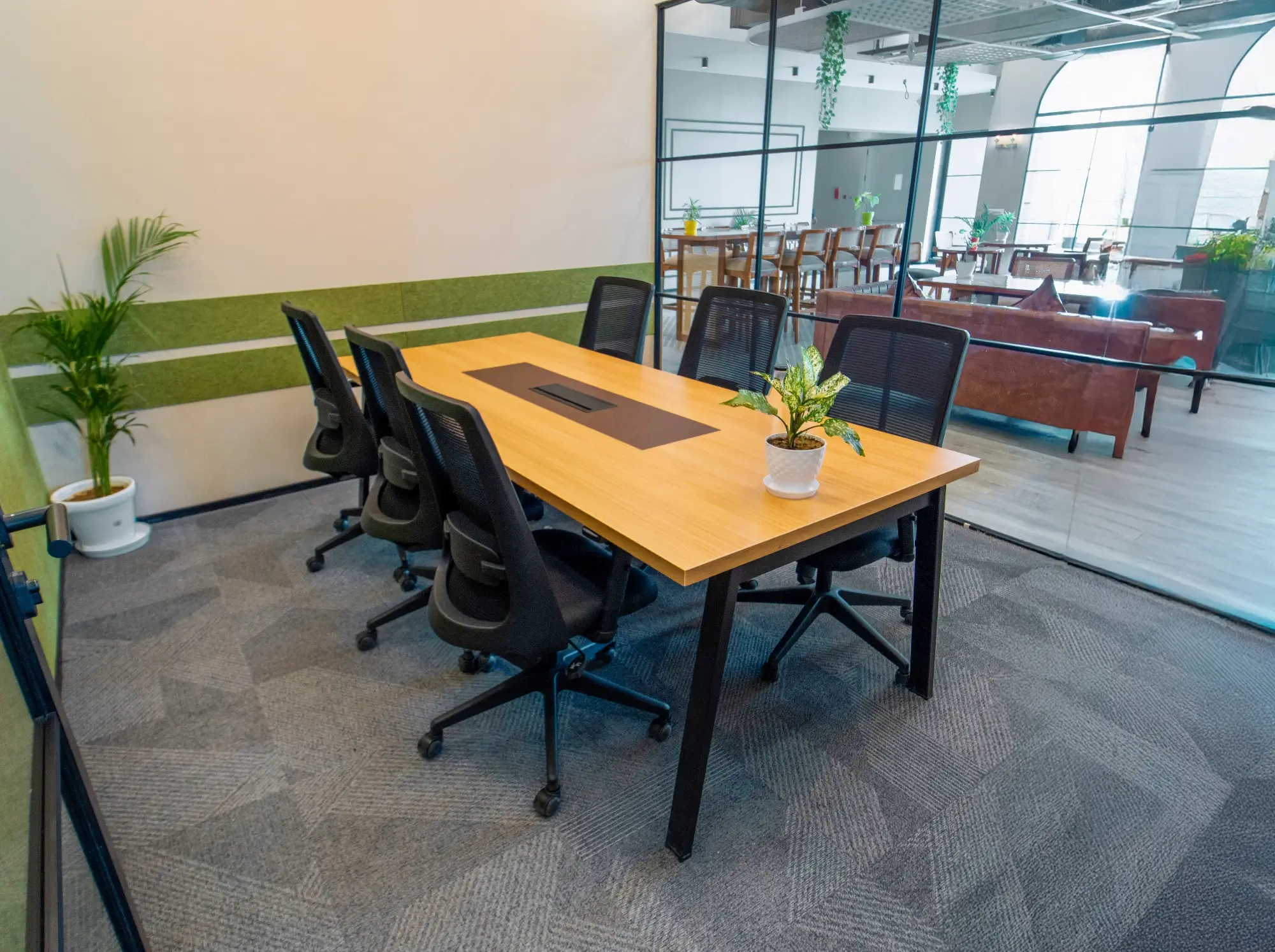
The workspace fix: make the office do what home can’t
Privacy on demand for deep work
Employees say they’ll come in if they can actually focus. Gensler’s global research and Steelcase’s 2024 studies both highlight privacy and access to the right spaces as the biggest gaps: people want open areas for teaming and enclosed spaces for heads-down tasks—often in the same hour. Build a mix of quiet rooms, phone pods, libraries and small “do-not-disturb” nooks right on the floor. (Source: Gensler)
Hybrid meetings that don’t punish remote teammates
Most office meetings now include at least one remote participant. Cisco’s workplace studies note that the vast majority of in-office meetings have a virtual attendee, so spaces must be built around acoustic treatment, front-row video walls, ceiling mics, AI camera framing, and reliable dual-ISP connectivity. Equip rooms for meeting equity (equal visibility and audio) and you remove the most common complaint about coming in. (Source: Cisco)
High-performance air and light (so people literally think better)
Harvard’s COGfx research shows that when ventilation is improved and CO₂ stays low, cognitive scores jump—with measurable gains across all decision-making domains. Indoor PM2.5 and high CO₂ correlate with slower responses and lower accuracy; workers feel that difference and vote with their feet. Instrument IAQ (CO₂, PM2.5, VOCs) and publish real-time dashboards; employees will notice—and appreciate—cleaner air and better lighting.
Collaboration zones that earn the trip
People commute for planned collaboration, mentorship, and social energy—not to sit in a video call all day. Create project studios, scrum rooms, maker tables, and café-style social hubs adjacent to focus zones so teams can slide between modes. Gensler’s 2024 workplace research stresses experience-rich variety beats one-size-fits-all layouts.
Choice, control, and neighborhoods—not rows of desks
Ditch fixed seats in favor of team neighborhoods with bookable options: quiet desks, collaboration benches, touchdown bars. Leesman’s ongoing studies show office use depends on commute ease and how well the space supports tasks—so give people control (booking, wayfinding, comfort settings) and watch attendance rise.
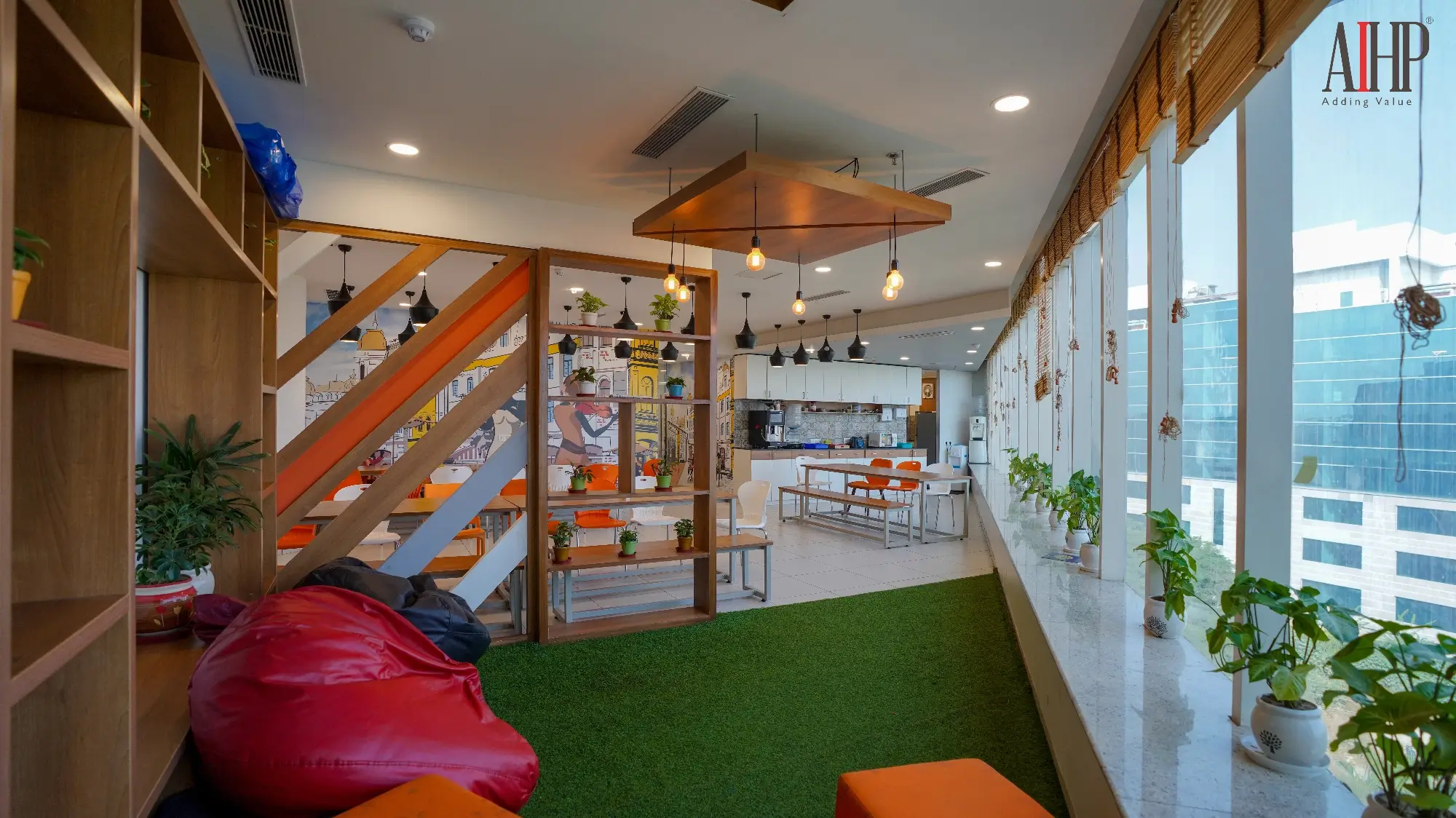
Location still wins: metro-connected, zero-CapEx campuses
The fastest attendance lift often comes from shortening the last mile. In Gurgaon, that means Rapid-Metro adjacency and NH-8 access. If your team can step off a train and badge in, you’ve already solved the biggest barrier. Explore metro-linked floors at AIHP’s Gurgaon portfolio to combine commute ease with a 60-day delivery promise:
- Design a space that earns the commute with AIHP’s office design team.
- Pick the right micro-market with prime Gurgaon locations, from Cyber City adjacency to Golf Course Road.
- Need expressway frontage and quick Metro hop? See offices near NH-8 and Udyog Vihar
Add the real kicker: zero-CapEx. Instead of sinking crores into fit-outs, use an all-inclusive licence that bundles interiors, utilities, and FM—so you can invest in people and product, not drywall.
Policy tune-ups that reinforce the space (without heavy-handed mandates)
- Anchor days, team-level autonomy. Give teams one or two anchor days and let managers pick the rhythm; this aligns with how hybrid is actually used across markets.
- Outcomes over “productivity paranoia.” Microsoft’s Work Trend Index flagged a trust gap: many leaders struggle to “see” productivity in hybrid settings. Fix that with clarity on outcomes and transparent progress signals, not badge policing.
- Tie attendance to purpose, not policy. Leesman’s research shows frequency of office use is driven by commute ease and task support—so pair lighter policies with spaces that remove friction.
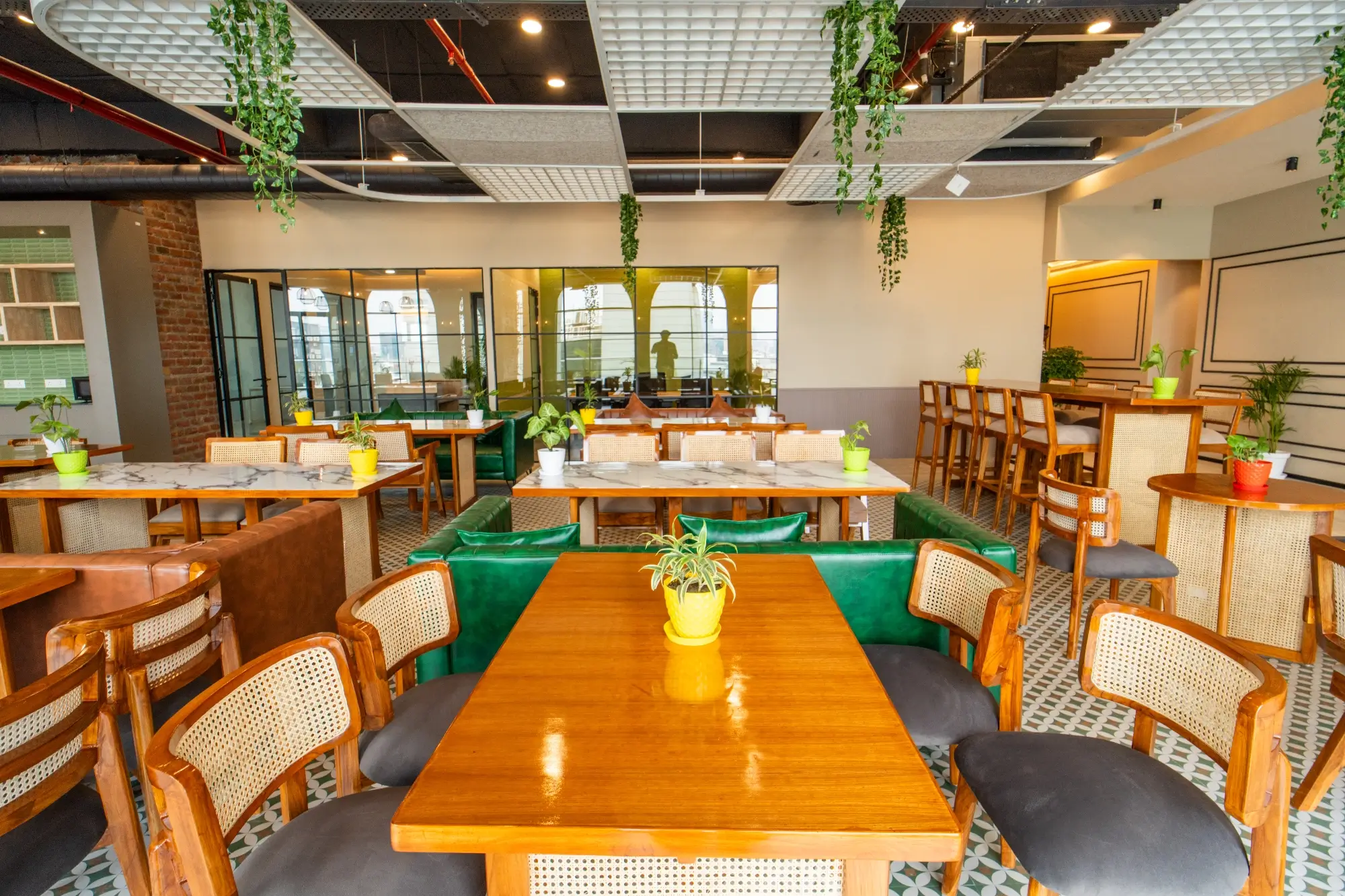
Rollout plan: measure → prototype → launch (in 60 days)
1) Listen and baseline. Run a fast pulse survey to map work modes (focus, in-person collab, virtual collab, learning, social). Employee-experience surveys and real-estate/occupancy data are the top tools companies rely on to steer workplace changes.
2) Prototype on the floor. Stand up a pilot neighborhood: a handful of focus rooms, a hybrid-meeting suite, a project studio, and a social hub. Measure utilization and sentiment for two weeks.
3) Launch the full kit in 60 days. AIHP’s delivery model compresses fit-out, IT, and compliance into a parallel sprint so your improved workplace is open inside two months—not a year.
4) Instrument the experience. Use occupancy and IAQ sensors (CO₂/PM2.5) with a simple “green-zone” dashboard on each floor. Cisco’s own campuses collect thousands of data points per second to keep spaces tuned; you don’t need that scale to start, but visibility builds trust.
What success looks like: KPIs worth tracking
- Utilization on anchor days (vs. baseline)
- Meeting equity score (room tech performance, remote-join parity)
- Focus-space availability (wait times for quiet rooms/pods)
- IAQ adherence (percent of time CO₂ < 800 ppm, PM2.5 in green range)
- Commute satisfaction (post-move pulse) and intent-to-return next week
- Attrition and hiring velocity (quarter-on-quarter)
When these needles move in the right direction, badge data follows—naturally.
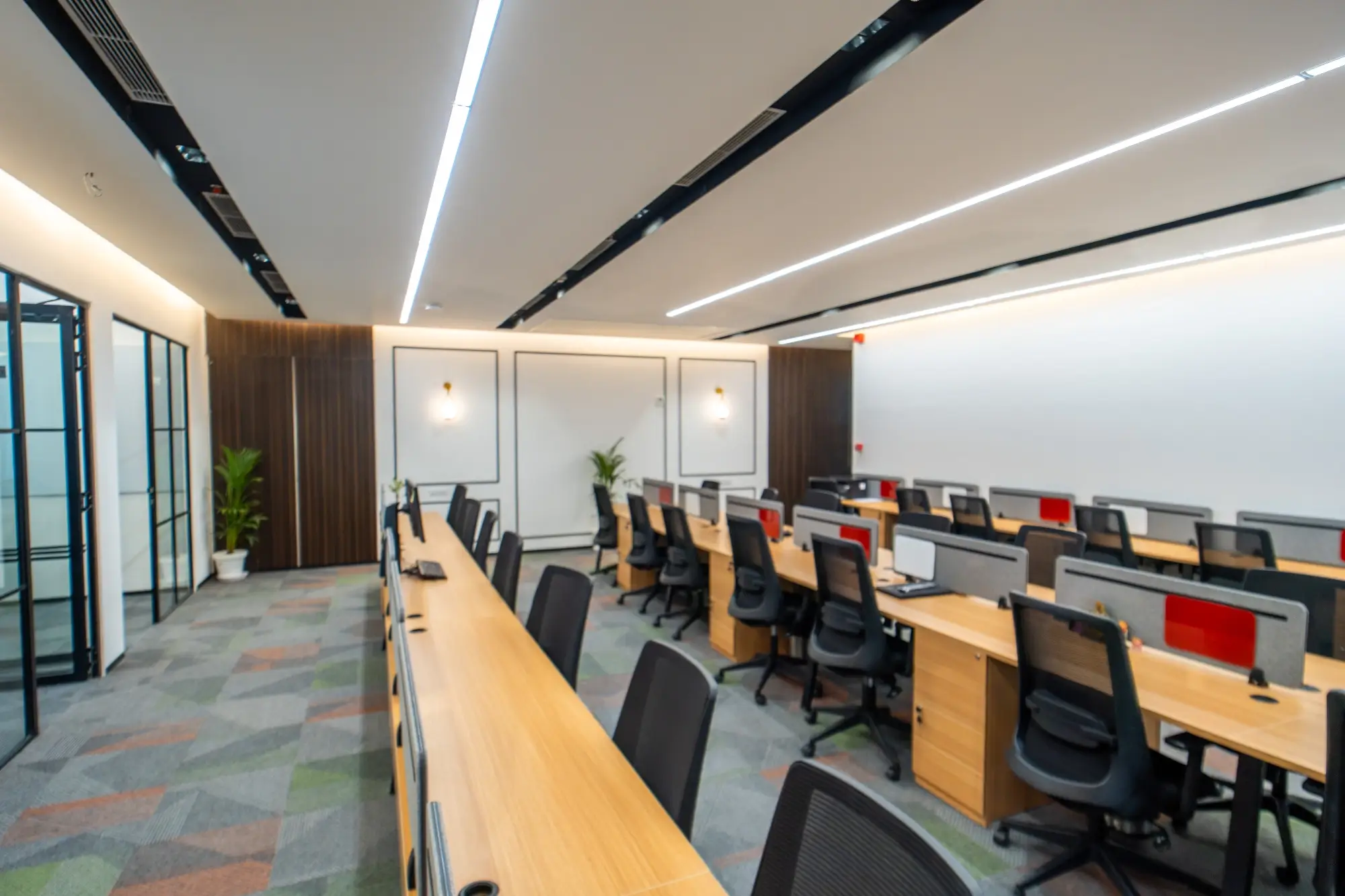
Conclusion – fix the space, the behavior follows
Return-to-office isn’t a tug-of-war—it’s a design challenge. Build a workplace that beats home for focus, makes hybrid meetings painless, breathes clean air, sits near transit, and respects people’s time, and you won’t need to mandate anything. People will show up because the office finally earns the commute.
Ready to turn a tough mandate into a magnetic workplace—in two months? Talk to AIHP’s design team and get a metro-connected, zero-CapEx floor delivered in 60 days that people actually want to use.
Frequently Asked Questions (FAQs)
Only when paired with better places to work. The strongest lifts come from privacy for focus, collaboration studios, and hybrid-ready meeting rooms; food and perks help, but they’re not the core reason people commute. Gensler’s 2024 report emphasizes experience-rich, task-supportive variety over “amenity distraction.”
Focus privacy. Steelcase’s latest findings and Gensler’s surveys both put privacy and control at the top of worker needs. A few great quiet rooms and phone pods can change attendance patterns within weeks.
Treat AV like a core utility: room acoustics, ceiling mics, AI cameras, reliable dual-ISP, and screen layouts that give remote people equal presence. Cisco’s case studies show meeting equity is now the linchpin of in-office effectiveness.
Yes. Harvard’s Healthy Buildings team found substantial cognitive gains with better ventilation and lower CO₂; high PM2.5 and CO₂ are linked to slower responses and lower accuracy. Publishing IAQ dashboards builds trust and confidence in the office.
Go metro-connected near Cyber City, Golf Course Road, or NH-8 to shrink the commute penalty.



